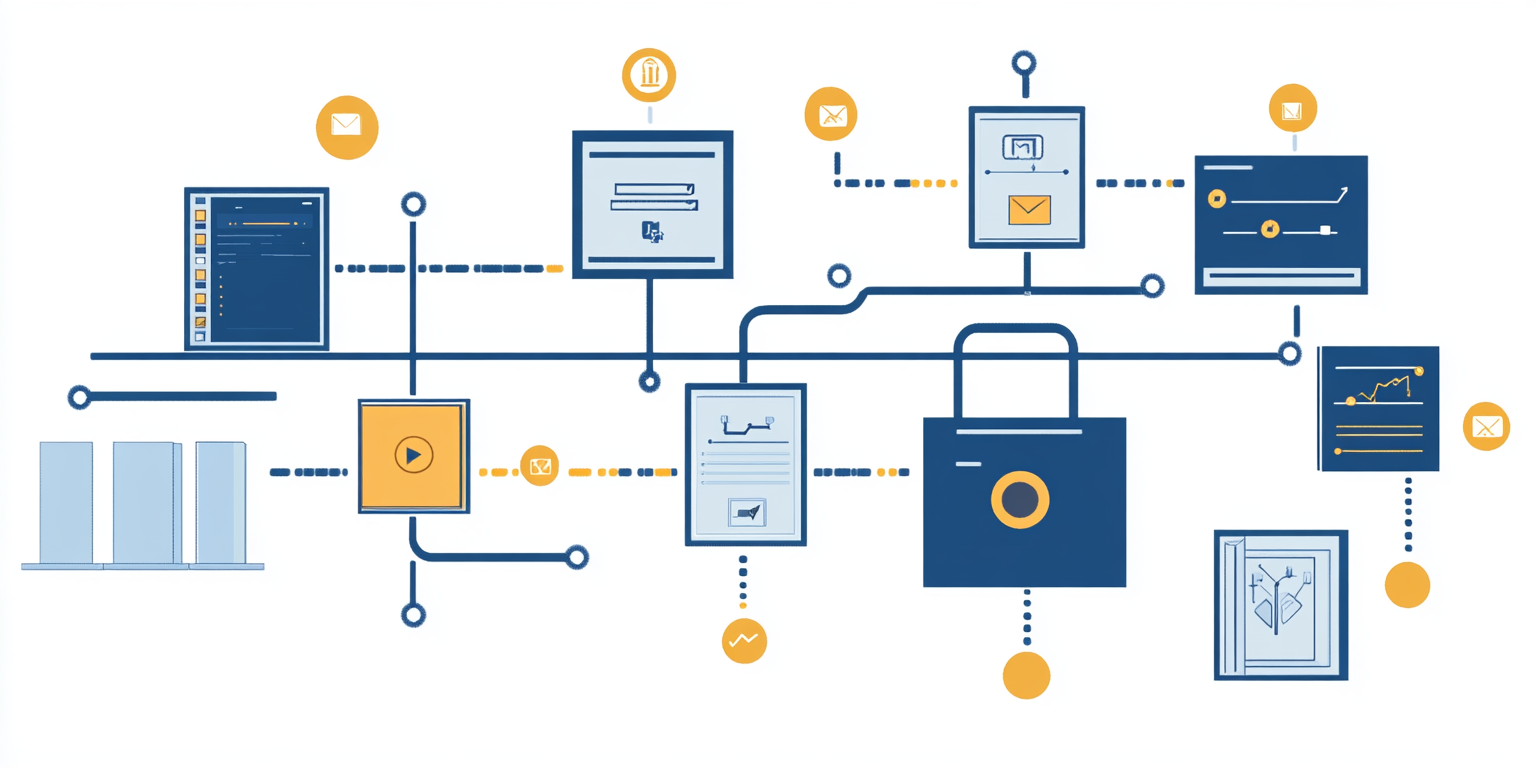Purpose of Today:
Today, you will walk through the complete journey of data, while practicing each stage using Python.
You will not just learn theory — you will simulate real-world analytics work, including:
- Defining a business problem,
- Collecting and preparing a dataset,
- Cleaning the dataset using Python,
- Analyzing it to find insights,
- Recommending decisions based on your analysis.
Today's Mission:
Master the complete data journey from messy raw data to clear business decisions, using Python at every major step.
By the end of today, you will have completed a mini end-to-end project yourself.
"Learning analytics without Python is like learning surgery without practicing with real tools."
Today's Action Plan (SPARK Method)
| SPARK Step | Purpose | Activities |
|---|---|---|
| Structured Learning (S) | Understand each phase of the data life cycle | Learn the Business Understanding ➔ Collection ➔ Cleaning ➔ Analysis ➔ Decision Making steps with Python examples |
| Practical Case Mastery (P) | Apply the data life cycle to a real-world case | Work through a churn analysis project using sample data |
| Actionable Practice (A) | Perform tasks hands-on in Python | Build a mini project covering all phases |
| Real Interview Simulations (R) | Simulate interview case questions using technical and business explanations | Practice explaining where errors occur and how Python helps |
| Killer Mindset Training (K) | Build full project thinking mindset | Visualize managing messy-to-clean projects smoothly |
1. Structured Learning (S) — Deep Concept and Python Application
Step 1: The Data Life Cycle + Python Practice
Ask U2xAI:
"Explain each stage of the data life cycle with sample Python tasks."
1. Business Understanding
- Goal: Define what business question you're solving.
- Python Activity: No code here — but document clearly.
Example: Business Problem - Reduce customer churn by identifying at-risk customers early.
2. Data Collection
- Goal: Gather the right data.
Python Simulation:
Create or load a small dataset manually.
Example:
import pandas as pd
# Simulating customer data
data = {
'customer_id': [1, 2, 3, 4, 5],
'signup_date': ['2023-01-01', '2023-01-10', '2023-02-15', '2023-03-01', '2023-03-10'],
'last_login': ['2023-06-01', '2023-05-25', '2023-05-01', None, '2023-06-10'],
'support_tickets': [1, 0, 5, 2, 3],
'churned': [0, 0, 1, 1, 0]
}
df = pd.DataFrame(data)
print(df)
3. Data Cleaning
- Goal: Fix missing, inconsistent, or wrong data.
Python Cleaning Example:
# Check missing values
print(df.isnull().sum())
# Fill missing last login with a placeholder or estimated date
df['last_login'] = df['last_login'].fillna('2023-05-15')
# Convert dates to datetime
df['signup_date'] = pd.to_datetime(df['signup_date'])
df['last_login'] = pd.to_datetime(df['last_login'])
# Review cleaned dataset
print(df)
Common Mistakes to Catch:
- Missing values
- Incorrect formats
- Duplicate records (use
df.duplicated())
4. Data Analysis
- Goal: Find patterns, trends, and key factors.
Python Analysis Example:
# How many churned customers?
churn_rate = df['churned'].mean()
print(f"Churn Rate: {churn_rate*100:.2f}%")
# Average support tickets for churned vs. non-churned
avg_tickets_churned = df[df['churned'] == 1]['support_tickets'].mean()
avg_tickets_not_churned = df[df['churned'] == 0]['support_tickets'].mean()
print(f"Average Support Tickets (Churned): {avg_tickets_churned}")
print(f"Average Support Tickets (Not Churned): {avg_tickets_not_churned}")
Simple Insight:
- Customers with more support tickets have a higher churn rate.
5. Decision Making
- Goal: Recommend actions based on insights.
Example Business Recommendation:
Recommendation:
"Proactively reach out to customers who open more than 3 support tickets within 60 days with VIP support services to reduce churn."
Highlight:
"Every stage matters. Skipping any step risks misleading the final decision."
2. Practical Case Mastery (P) — Full Mini Project
Step 1: Run a Full Mini Project in Python
Mini Project:
"Analyze customer churn based on ticket volume and last login dates."
Python Workflow:
- Define business problem (Markdown)
- Create or load dataset (Pandas)
- Clean dataset (missing values, format dates)
- Analyze patterns (churn rates, support ticket impact)
- Recommend action plan
Ask U2xAI:
"Evaluate my full project steps — are my cleaning, analysis, and conclusions logical?"
3. Actionable Practice (A) — Create a Python-Based Checklist
Assignment:
Build a practical mini-project checklist including Python tasks.
Sample Checklist:
- Document business goal clearly (Markdown)
- Load or create dataset (Pandas)
- Inspect and summarize dataset (
.info(),.describe()) - Handle missing values (
.fillna(),.dropna()) - Correct data types (date parsing)
- Explore patterns (groupby, mean comparisons)
- Summarize insights and suggest actions
Ask U2xAI: "Help me expand this checklist to cover common mistakes and checks."
4. Real Interview Simulations (R) — Business + Python Integration
Simulate common questions with U2xAI:
Mock Interview Question:
- "Where in the data life cycle does data quality most often fail, and how would you catch it early?"
Sample Strong Answer:
- "Data quality failures often happen during collection and cleaning.
I would catch it early by running.isnull(),.dtypes,.duplicated(), and quick.describe()reviews right after loading the dataset."
Practice Related Questions:
- "How would you plan cleaning if you expect missing last login data?"
- "What happens if you skip validating data types in date fields?"
Ask U2xAI: "Score my technical and business explanation quality."
5. Killer Mindset Training (K) — Project Thinking Routine
Mindset Challenge:
- Instead of thinking task-by-task (only loading, only cleaning),
think about managing the full data journey, seeing how each action fits into the business goal.
Guided Visualization with U2xAI:
- Visualize:
- Receiving messy customer data,
- Cleaning and exploring it in Python calmly,
- Discovering churn risk patterns,
- Presenting a crisp final recommendation to leadership.
Daily Affirmations: "I see how every small code step builds towards a big business decision."
"I connect data cleaning, analysis, and insight smoothly and calmly."
"I can manage complete analytics projects end-to-end."
Mindset Reminder:
"Good analysts write clean code. Great analysts connect code to business."
End-of-Day Reflection Journal
Reflect and answer:
- Which stage of the data life cycle was easiest for me today using Python?
- Where did I get stuck during cleaning, exploration, or analysis?
- How would I explain 'data cleaning' importance to a business stakeholder without using technical jargon?
- How confident do I feel running a mini end-to-end project in Python now? (Rate 1-10)
- What Python skill do I want to sharpen even more tomorrow?
Optional Bonus:
Ask U2xAI: "Give me a messy dataset simulation and ask me to clean, explore, and suggest decisions."
Today’s Learning Outcomes
By the end of today, you have:
- Understood and practiced each phase of the data life cycle using Python.
- Built a full small project from business goal to final recommendation.
- Practiced cleaning, exploring, analyzing, and reporting data hands-on.
- Simulated real-world interview questions connecting technical steps to business results.
- Strengthened the mindset of being a full project manager, not just a coder.
Closing Thought:
"The best analysts don't just move data. They move decisions."











